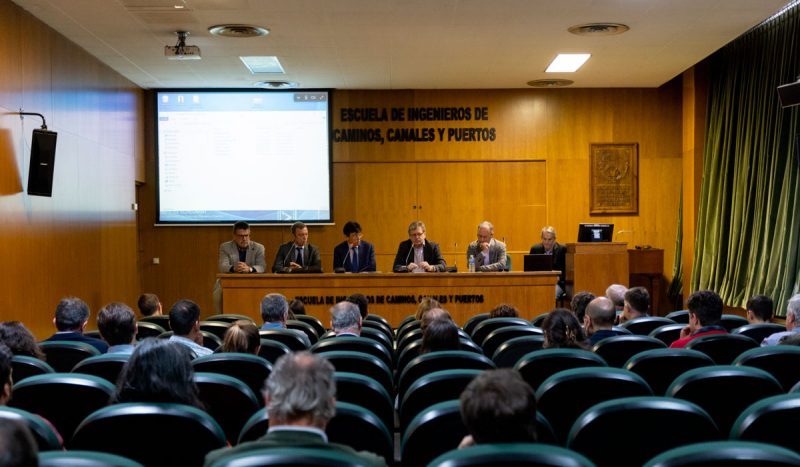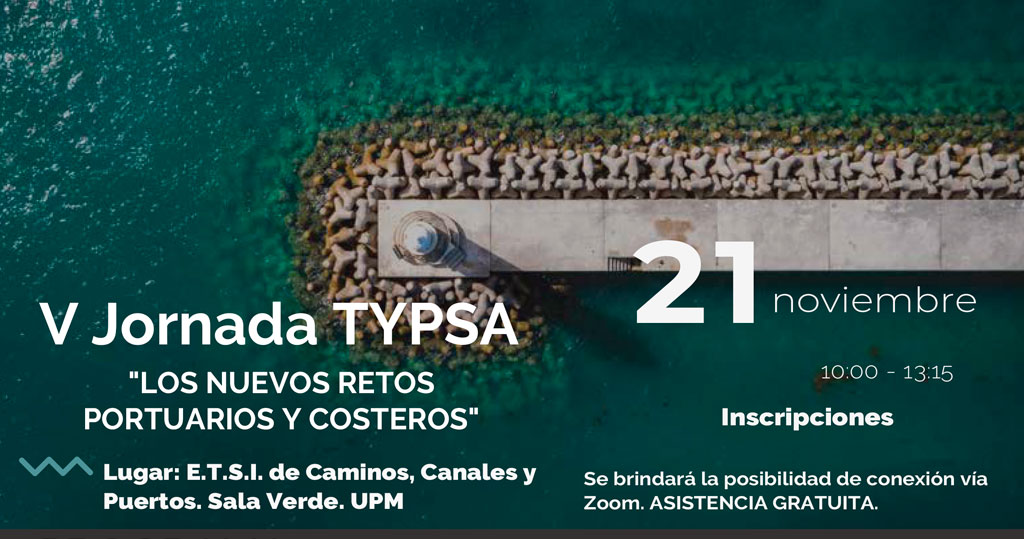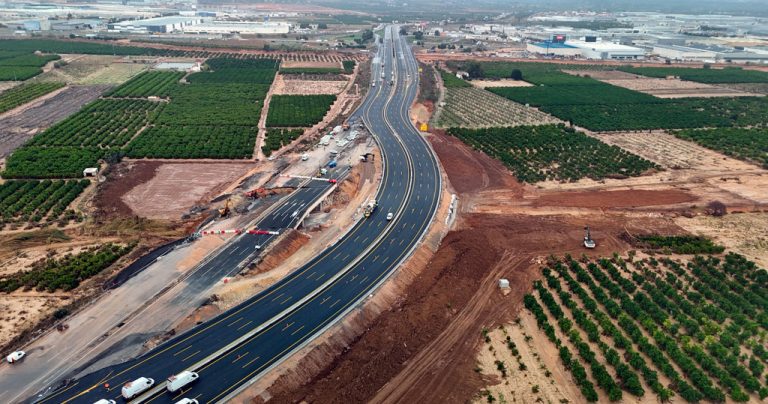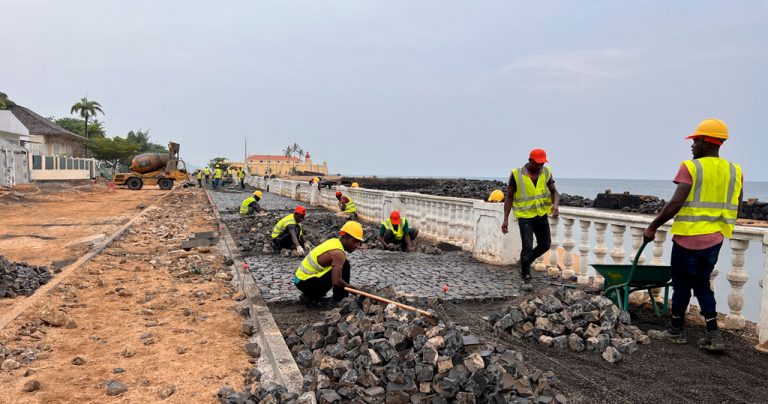As in recent years, the V TYPSA Conference on Maritime Engineering has taken place, with experts in the international port and coastal sector coming together to analyse relevant developments and associated topics of interest.
The conference, held in November at the School of Civil Engineering of Madrid, under the theme “New Port and Coastal Challenges”, and with over 100 attendees, both in person and online, is part of the TYPSA´s current agreement with the Polytechnic University, concerning knowledge sharing in the field of maritime and port engineering.

The conference was attended by Manuel Arana, director of State Port Planning and Development, José Miguel Atienza, director of the School of Civil Engineers, Alberto Bornstein, director of the Agustín de Betancourt Foundation, José A. Osuna, corporate director at TYPSA, David López Rivas, head of Port and Coastal Engineering, also at TYPSA, and Vicente Negro, research director of the Ports and Coasts Laboratory of the Polytechnic University of Madrid. From different perspectives, they all highlighted the need to strengthen relations between universities, research centres and companies, to implement the new existing tools to overcome current and future problems impacting greatly on the population living on the shores of oceans, seas, great lakes, etc.
TYPSA gave two presentations which aroused great interest among the attendees. Continuing on from last year’s presentation, Nuria Mesonero presented the methodology for studying an industrial plot affected by rising sea levels in Panama; Virginia Martín, together with Antonio Tomás from the University of Cantabria, shared a success story in the implementation of non-traditional data sources, such as satellite images, and current methodologies based on artificial intelligence used in the rehabilitation of the port of Kalundu, in the Democratic Republic of Congo, on the shores of Lake Tanganyika. In the case of inland waters, many of the tools available in the oceans are not available, thus forcing designers to develop non-traditional methodologies for estimating parameters as basic as historical lake levels.

Francisco Esteban Leffler, a TYPSA collaborator and current president of PIANC, shared some of the lessons learned in Japan after the latest high-impact tsunamis recorded in that country. The success of new infrastructures designed in areas with a potential risk of suffering the devastating effects of these natural phenomena will depend on the understanding of such forced learning.
Additionally, Fernando Colom (Econcrete) shared new successful cases of the use of protective blocks for sheltering dams and breakwaters developed and manufactured with “bio-friendly” concrete; Javier Becerra, from COTESA, presented the new tools that are beginning to be available in Spain for the study of the various coastal morphologies; Miguel Vázquez, from Dragados, gave an introduction to the MADAME project, the objective of which is to increase the durability of the backrests of shelter dams, structures that are required for strong impact and abrasions that have caused the premature aging of concrete; and Esteban Biondi, a PIANC collaborator, shared current cases of success in the adoption of green solutions in the construction of marinas, in various parts of the world.
This conference reinforces participants’ commitment to the Sustainable Development Goals of the 2030 Agenda and, in particular, to Goal 9 “Build resilient infrastructures, promote inclusive and sustainable industrialisation and promote innovation”.





